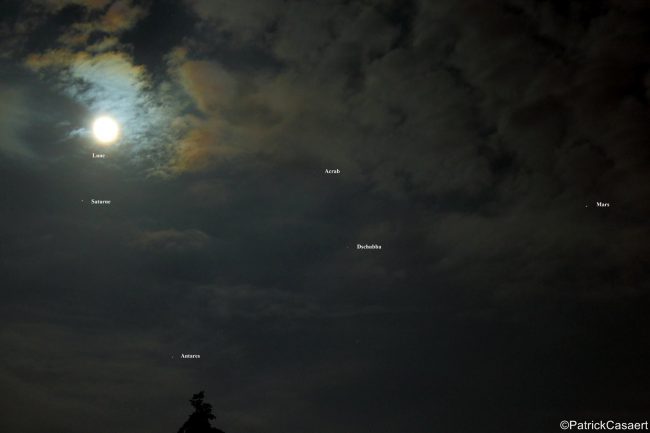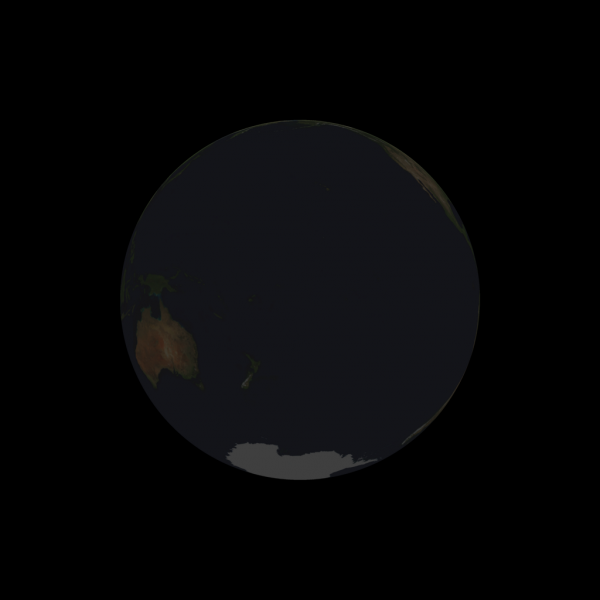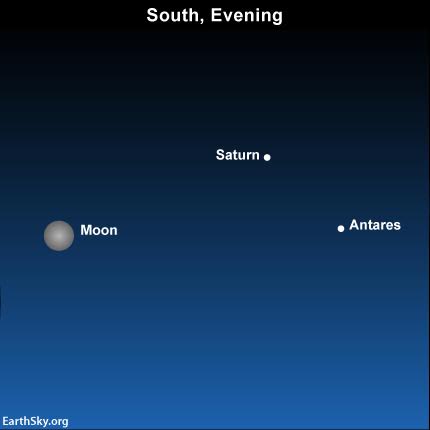Looking for the story on the solstice full moon? Click here.
Tonight – June 19, 2016 – it’s solstice eve and the moon you’ll see shining near Saturn and the star Antares may look full. The 2016 June full moon and solstice fall on the same date, June 20. But, for the Americas, the June 19 moon is closer to the crest of the moon’s full phase than the moon June 20. Although the full moon and solstice happen at the same instant all around the world, the clock reading differs by time zone. At U.S. time zones, the moon turns precisely full on June 20 at 7:02 a.m. EDT, 6:02 a.m. CDT, 5:02 a.m. MDT and 4:02 a.m. PDT.
So, if you’re in the Americas, as we are, the moon you’ll see during the night tonight is closer to full than tomorrow night’s solstice full moon.
The June solstice comes on June 20, 2016 at 6:34 p.m. EDT, 5:34 p.m. CDT, 4:34 p.m. MDT and 3:34 p.m. PDT. Read more about the June solstice here.
In the Northern Hemisphere, we call the June full moon the Strawberry Moon, Rose Moon or Flower Moon.
In the Southern Hemisphere, we could perhaps call the June full moon the Long Night Moon since it’s winter there, and the nights are long, and the moon rides high in the sky.

For the entire world, this year’s June full moon is somewhat unusual in that it’s the fourth of four full moons in one season. Normally, there are only three full moons in a season. But when a season harbors four full moons, the third of these four full moons is often called a Blue Moon.
The first full moon came soon enough after the March 2016 equinox to allow for a fourth full moon before the June 2016 solstice:
Equinox: March 20, 2016
Full moon: Mar 23, 2016
Full moon: Apr 22, 2016
Full Moon: May 21, 2016 (Blue Moon)
Full moon: Jun 20, 2016 (11:02 Universal Time)
Solstice: June 20, 2016 (22:34 Universal Time)
In cycles of 19 years, the phases of the moon recur on, or near, the same calendar dates. Sure enough, 19 years ago and 19 years from now, in the years 1997 and 2035, four full moons take place in between the March equinox and June solstice, and the May full moon counts as a Blue Moon – third of four full moons in one season.

It’s said that the moon rides high in winter and low in summer, but that’s only true of the full moon. Remember, the full moon is opposite the sun. Around the June solstice, the sun is rising farthest north (left) of due east and setting farthest north (right) of due west. It’s highest in the sky (summer) for the Northern Hemisphere and lowest in the sky (winter) for the Southern Hemisphere.
The full moon is opposite the sun. This June solstice full moon will mimic the path of the December solstice sun, rising south of due east and setting south of due west. It’ll follow the low path of the winter sun in the Northern Hemisphere, and, south of the equator, assume the lofty path of the summer sun.
Bottom line: The June 19, 2016 moon, near Saturn on solstice eve, looks full. The June 20 full moon falls on the solstice.












